A group of scrappy young baseball players become celebrated athletes who win respect at a national championship in Wei Te-sheng’s (魏德聖) Kano. But Wei’s film, which is based on a true story, is more than just a movie about baseball.
As with his earlier Cape No. 7 (海角七號, 2008) and Warriors of the Rainbow: Seediq Bale (賽德克.巴萊, 2011), Wei’s latest film presents a version of history not commonly taught in Taiwan’s schools but remains an integral part of the nation’s identity.
Whereas Cape No. 7 examined the relationship between Taiwan and Japan through parallel stories that span 60 years and Warriors of the Rainbow dramatized the 1930 Wushe Incident (霧社事件), Kano tells the story of a high-school baseball team from Chiayi that takes second-place in Japan’s prestigious national high school baseball championship at Hanshin Koshien Stadium in 1931. It offers an uplifting perspective on Taiwan’s history, culture and identity through the game of baseball, which was introduced by Japan.
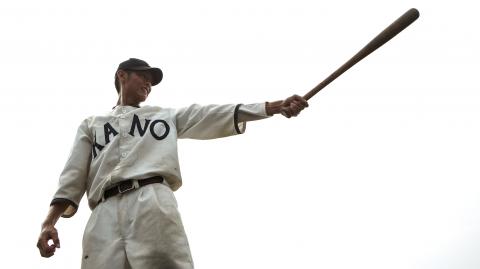
Photo courtesy of Vie Vision Pictures
The film opens in Keelung, 1944, where soldiers of the Japanese imperial army are preparing to depart for the Southeast Asian theater of War World II. We follow a group of officers boarding a crowded train that’s making its way to the southern tip of the Taiwan. Settling down into a seat, Joshiya (Aoki Ken) tells one of his fellow soldiers to “wake me up in Chiayi.” The former baseball player wants to see the birthplace of Kano (嘉農), the nickname of the Chiayi high school baseball team that he had played against in the legendary tournament.
We then travel back to 1929, when Japanese, Taiwanese and Aboriginal high school ballplayers are rigorously training under the eye of their coach Kondo (Masatoshi Nagase) in the lush fields of Chiayi. While others were dismissive of the team’s prospects because they’d never won a game, the coach encourages the young athletes to train hard so as to compete at the Koshien championship.
And against all odds they do. In 1931, after winning Taiwan’s regional tournament, the previously obscure team travels to Japan and stuns its rivals at Koshien. Among them, Joshiya, a star athlete and the Hokkaido team’s pitcher, is overwhelmed by the team’s stamina and admits defeat.
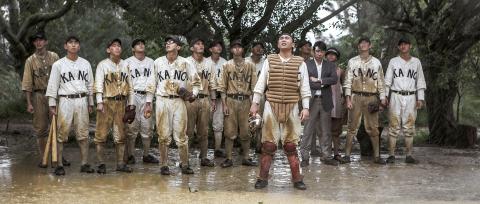
Photo courtesy of Vie Vision Pictures
Kano eventually advances to the finals, but the fierce game takes its toll on Go (Tsao Yu-ning, 曹佑寧), the team’s pitcher, who has suffered an injury to his hands that makes it difficult to pitch. Despite the painful injury, Go persists. And so do his teammates, banding together to fight until the end.
Kano, however, eventually loses the game. But as the players leave the stadium, the 55,000 baseball fans who attended the championship give the team a standing ovation, marking a monumental moment in the history of baseball in Taiwan.
A feature debut by Umin Boya, an actor and director of Sediq (賽德克) and Sakizaya (撒奇萊雅) descent who starred in Wei’s Warriors of the Rainbow: Seediq Bale, the technically polished film is an audio-visual feast designed to elicit big emotions. The opulent cinematography of Chin Ting-chang (秦鼎昌), Wei’s long-time collaborator, transforms a sleepy backwater town into a charming pastoral heaven. Meticulous research is evident in the great amount of historically accurate props, costume and large-scale settings which include the streets of 1930s Chiayi and the Hanshin Koshien Stadium.
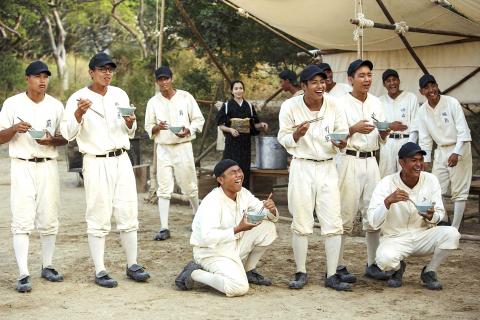
Photo courtesy of Vie Vision
As may be expected with a sports film, the narrative climax is achieved in the game’s final matches, where real-life baseball players have been used to great effect. The cast of young professional athletes inject striking energy and gripping tension into the sequences, and the director also deserves applause for successfully delivering the tactics and emotional elements that make the game of baseball so enthralling.
Taiwan’s colonial past is ever present in the story and its portrayal is surprisingly upbeat. Whereas Warriors of the Rainbow: Seediq Bale shows tribal chief Mouna Rudo leading Seediq warriors in a violent uprising against their Japanese oppressors, Kano depicts Japanese, Taiwanese and Aborigines uniting for a cause. Most of the first half of film is dedicated to portraying the harmonious coexistence between Taiwanese and Japanese, who together build Taiwan’s colonial infrastructure.
However, instead of exploring in psychological depth the lives of the different ethnic communities, the movie at times resembles a work of propaganda — expressed by the character Hatta waving to the Taiwanese farmers with a toothsome smile — and relies too much on composer Naoki Sato’s overwrought score which appears designed to sway emotions rather than set a mood.
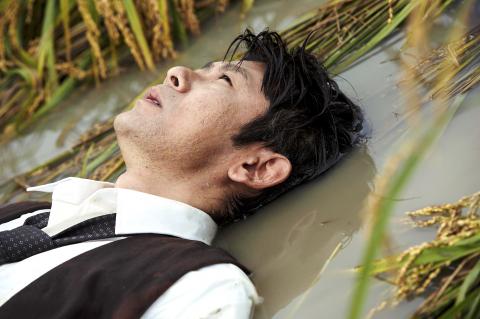
Photo courtesy of Vie Vision
Still, Kano forms the third in a trilogy of movies where Wei and his filmmaking colleagues have created a cinematic world that looks at Taiwan’s colonial past through different viewpoints, while inviting Taiwanese audiences to rethink their history.
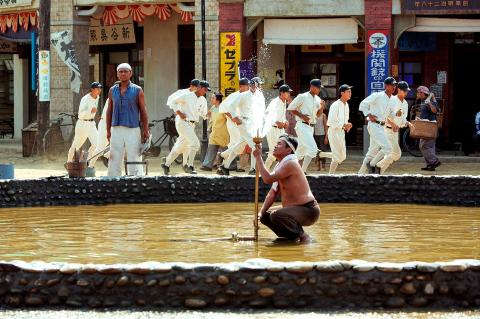
Photo courtesy of Vie Vision
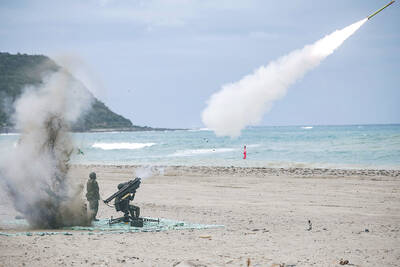
In late October of 1873 the government of Japan decided against sending a military expedition to Korea to force that nation to open trade relations. Across the government supporters of the expedition resigned immediately. The spectacle of revolt by disaffected samurai began to loom over Japanese politics. In January of 1874 disaffected samurai attacked a senior minister in Tokyo. A month later, a group of pro-Korea expedition and anti-foreign elements from Saga prefecture in Kyushu revolted, driven in part by high food prices stemming from poor harvests. Their leader, according to Edward Drea’s classic Japan’s Imperial Army, was a samurai

The following three paragraphs are just some of what the local Chinese-language press is reporting on breathlessly and following every twist and turn with the eagerness of a soap opera fan. For many English-language readers, it probably comes across as incomprehensibly opaque, so bear with me briefly dear reader: To the surprise of many, former pop singer and Democratic Progressive Party (DPP) ex-lawmaker Yu Tien (余天) of the Taiwan Normal Country Promotion Association (TNCPA) at the last minute dropped out of the running for committee chair of the DPP’s New Taipei City chapter, paving the way for DPP legislator Su
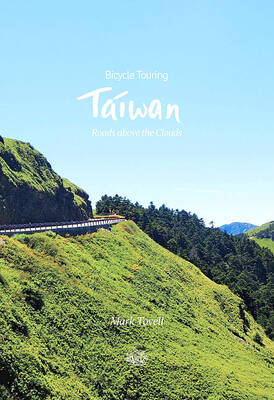
It’s hard to know where to begin with Mark Tovell’s Taiwan: Roads Above the Clouds. Having published a travelogue myself, as well as having contributed to several guidebooks, at first glance Tovell’s book appears to inhabit a middle ground — the kind of hard-to-sell nowheresville publishers detest. Leaf through the pages and you’ll find them suffuse with the purple prose best associated with travel literature: “When the sun is low on a warm, clear morning, and with the heat already rising, we stand at the riverside bike path leading south from Sanxia’s old cobble streets.” Hardly the stuff of your

Located down a sideroad in old Wanhua District (萬華區), Waley Art (水谷藝術) has an established reputation for curating some of the more provocative indie art exhibitions in Taipei. And this month is no exception. Beyond the innocuous facade of a shophouse, the full three stories of the gallery space (including the basement) have been taken over by photographs, installation videos and abstract images courtesy of two creatives who hail from the opposite ends of the earth, Taiwan’s Hsu Yi-ting (許懿婷) and Germany’s Benjamin Janzen. “In 2019, I had an art residency in Europe,” Hsu says. “I met Benjamin in the lobby